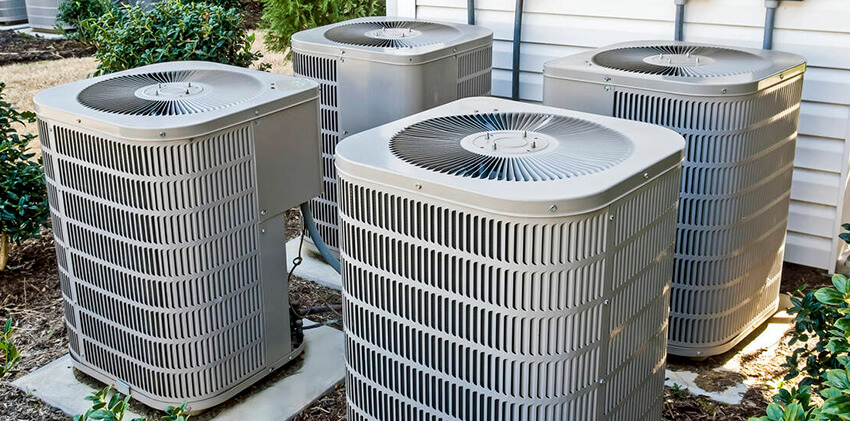Why is regular cleaning of the condenser coil crucial? First, it directly impacts the efficiency of your AC unit. Dirt, debris, and leaves can accumulate over time, hindering the coil’s ability to expel heat. This inefficiency forces your AC to work harder, leading to increased energy consumption and higher electricity bills.
Moreover, a clean coil can extend the lifespan of your AC unit. Dirt buildup can cause the system to overheat and experience premature wear. By keeping the coil clean, you mitigate the risk of unexpected breakdowns and costly repairs. Additionally, regular cleaning maintains air quality and ensures your system operates at its peak performance, providing comfort without the extra cost.
Safety First
Prioritizing Your Well-being: Before diving into the cleaning process, prioritizing safety is paramount. Always turn off the power to the AC unit at both the thermostat and the circuit breaker. This precaution prevents any risk of electrical shock and ensures that the system is completely safe to work on. Remember, your safety comes first, and taking the necessary precautions protects not only you but also the integrity of your AC system.
Tools and Materials Needed
To effectively clean your AC condenser coil, having the right tools and materials is essential. Here’s what you’ll need:
- Screwdriver: For removing the protective grille or cover.
- Soft Brush or Compressed Air: For gentle dry cleaning to remove loose debris.
- Garden Hose: For rinsing the coil. Ensure a gentle flow to avoid bending the fins.
- Coil Cleaner: A commercial cleaner designed for AC coils. Follow the manufacturer’s instructions for the best results.
- Fin Comb: Optional, for straightening any bent fins.
- Protective Gear: Safety glasses and gloves to protect against debris and chemicals.
Gathering these tools before you start ensures a smooth and efficient cleaning process, helping you to restore your AC’s performance and reliability.
Step-by-Step Cleaning Process
Let’s take a look at a video for reference
Maintaining your AC unit’s efficiency and longevity requires regular cleaning of the condenser coil. Here’s how to do it safely and effectively:
1. Power Off the Unit
Safety Cannot Be Overstated
Before beginning, ensure the AC unit is powered off. Turn off the thermostat inside your home, and then switch off the circuit breaker or disconnect switch outside. This step is crucial to prevent any electrical accidents.
2. Access the Condenser Coil
Unveiling the Coil
Remove the protective grille or cover from the AC unit using a screwdriver. This action will expose the condenser coil. Some units may have additional panels or guards — remove these as needed to fully access the coil.
3. Assess the Coil
Inspect Before You Act
Before proceeding with cleaning, inspect the coil for any signs of damage, such as bent fins or visible wear. If you find significant damage, consider consulting a professional before continuing.
4. Dry Cleaning the Coil
The Gentle First Step
Gently remove any loose debris from the coil using a soft brush or compressed air. Be careful not to bend the fins of the coil. This step helps to ensure that the wet cleaning process is more effective.
5. Wet Cleaning the Coil
The Deep Clean
- Apply Coil Cleaner: Spray the coil with a commercial coil cleaner, following the product’s instructions. Allow the cleaner to soak into the dirt and debris as recommended, usually a few minutes.
- Rinse the Coil: Gently rinse the coil with a garden hose, using a low-pressure setting to avoid damaging the fins. Ensure all cleaners and debris are washed away. Some stubborn areas may require a second application of coil cleaner.
6. Reassemble and Test
Bringing It All Together
Once the coil is clean and dry, reassemble any covers, panels, or guards that were removed. Turn the power back on to the unit, starting with the circuit breaker or disconnect switch, followed by the thermostat inside your home. Allow the unit to run for a few minutes and check to ensure it’s operating smoothly without any unusual noises.
Tips for Effective Cleaning
Cleaning your AC condenser coil is a critical maintenance task. To ensure you do it effectively, here are some tips:
Choose the Right Time
Timing Is Everything
Clean your condenser coil during mild weather, ideally in the spring or early fall. This timing prevents your home from becoming too hot or cold during the process and prepares your system for peak performance when you need it most.
Be Thorough But Gentle
A Careful Approach
While cleaning, be thorough in removing debris and dirt, but gentle with the equipment. Avoid using any sharp objects or excessive force, especially when dealing with the fins, as they can bend easily and affect the unit’s efficiency.
Regular Checks
Prevention Is Key
In addition to annual deep cleaning, regularly inspect your unit for debris, especially after storms or high winds. Removing twigs, leaves, and other debris can prevent blockages and maintain airflow efficiency.
Document the Process
A Learning Experience
Consider documenting the cleaning process with notes or photos, especially if you’re doing it for the first time. This record can help streamline future cleanings and serve as a guide for troubleshooting any issues.
Conclusion
Regularly cleaning your AC condenser coil is a vital maintenance task that can significantly impact the efficiency, performance, and lifespan of your AC unit. By following the step-by-step process outlined in this guide and adhering to the tips for effective cleaning, you can ensure your system operates at its best. Remember, while DIY maintenance can be rewarding and cost-effective, don’t hesitate to call a professional when necessary to ensure your system’s health and comfort throughout the seasons.
If you want to know more, please click below:
- Grilles, Registers & Diffusers – The Ultimate Guide
- HVAC Linear Slot Diffusers – The Ultimate Guide
- HVAC Egg Crate Diffuser – The Ultimate Guide
- HVAC Jet Nozzle Diffuser – The Ultimate Guide
- HVAC Linear Bar Grilles – The Ultimate Guide
- HVAC Air Swirl Diffusers – The Ultimate Guide
- HVAC Round Ceiling Diffusers – The Ultimate Guide
- Round Ceiling Diffusers – The Ultimate Guide
- Exhaust Air Louver – The Ultimate Guide
- HVAC Registers – The Ultimate Guide


